
El Calafate: Gateway to Argentine Patagonia
Discover El Calafate, the enchanting gateway to Argentine Patagonia, where the majestic Perito Moreno Glacier and diverse outdoor adventures await you.
El Calafate is a charming town nestled on the southern shore of Lake Argentino in Argentina. Known as the gateway to the stunning Los Glaciares National Park, it offers visitors a unique blend of natural beauty and adventure. The town is named after the calafate berry, a local fruit which, according to legend, ensures that anyone who eats it will return to Patagonia. The main draw of El Calafate is the spectacular Perito Moreno Glacier, one of the few advancing glaciers in the world. A visit to this awe-inspiring natural wonder is a must, offering opportunities to witness dramatic ice calving and to explore the glacier through trekking tours. The town itself is vibrant and welcoming, with a variety of restaurants, shops, and hotels catering to all tastes and budgets. Beyond the glacier, El Calafate serves as a hub for other outdoor activities such as horseback riding, bird watching, and boat tours on Lake Argentino. The nearby Lago Roca and the local flora and fauna provide additional attractions for nature enthusiasts. For those interested in history and culture, the Glaciarium Museum offers fascinating insights into the region's glaciology and the impact of climate change. El Calafate’s unique combination of breathtaking landscapes, adventurous activities, and warm hospitality makes it an unforgettable destination for any traveler.
Local tips in El Calafate
- Pack layers and waterproof clothing, as weather can change rapidly.
- Book glacier tours in advance, especially during peak season.
- Try the local calafate berry jam, a delicious regional specialty.
- Visit the Glaciarium Museum to learn more about glaciers and climate change.
- Rent a car for greater flexibility in exploring nearby attractions.
El Calafate: Gateway to Argentine Patagonia
El Calafate is a charming town nestled on the southern shore of Lake Argentino in Argentina. Known as the gateway to the stunning Los Glaciares National Park, it offers visitors a unique blend of natural beauty and adventure. The town is named after the calafate berry, a local fruit which, according to legend, ensures that anyone who eats it will return to Patagonia. The main draw of El Calafate is the spectacular Perito Moreno Glacier, one of the few advancing glaciers in the world. A visit to this awe-inspiring natural wonder is a must, offering opportunities to witness dramatic ice calving and to explore the glacier through trekking tours. The town itself is vibrant and welcoming, with a variety of restaurants, shops, and hotels catering to all tastes and budgets. Beyond the glacier, El Calafate serves as a hub for other outdoor activities such as horseback riding, bird watching, and boat tours on Lake Argentino. The nearby Lago Roca and the local flora and fauna provide additional attractions for nature enthusiasts. For those interested in history and culture, the Glaciarium Museum offers fascinating insights into the region's glaciology and the impact of climate change. El Calafate’s unique combination of breathtaking landscapes, adventurous activities, and warm hospitality makes it an unforgettable destination for any traveler.
When is the best time to go to El Calafate?
Iconic landmarks you can’t miss
PatagoniaChic - Excursiones en El Calafate
Discover the breathtaking landscapes of Patagonia with expert-led tours and excursions from PatagoniaChic in El Calafate.

Glaciarium Patagonian Ice Museum
Explore the Glaciarium Patagonian Ice Museum, an educational marvel showcasing the beauty and importance of glaciers in a unique cultural setting.

Reserva Laguna Nimez
Explore the breathtaking landscapes and vibrant wildlife of Reserva Laguna Nimez, a must-visit nature preserve in El Calafate, Argentina.

Los Glaciares, Intendencia National Park
Explore the breathtaking beauty of Los Glaciares National Park, home to stunning glaciers and diverse wildlife in Argentina's majestic Patagonia.

Punta Walichu - Reserva Natural y Arqueológica
Explore Punta Walichu, a stunning archaeological reserve in El Calafate, where nature meets the rich heritage of Patagonia's indigenous cultures.

Centro de Interpretación Histórica Calafate
Explore the fascinating history of El Calafate at the Centro de Interpretación Histórica, a must-visit museum for all travelers in Patagonia.
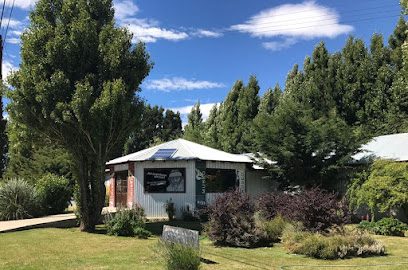
Cartel de El Calafate
Discover the breathtaking beauty of Cartel de El Calafate, a vibrant landmark in the heart of Patagonia attracting travelers from around the world.

Calafate Parque Hotel
Discover the charm of El Calafate at Calafate Parque Hotel, where comfort meets nature’s breathtaking beauty in the heart of Patagonia.

Estancia 25 de Mayo
Experience the breathtaking natural beauty and rich biodiversity of Estancia 25 de Mayo in El Calafate, a true gem of Patagonia.
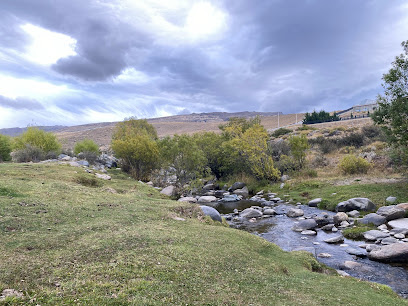
Calafate Tours
Explore Patagonia's natural wonders with Calafate Tours – your gateway to adventure in El Calafate and beyond.
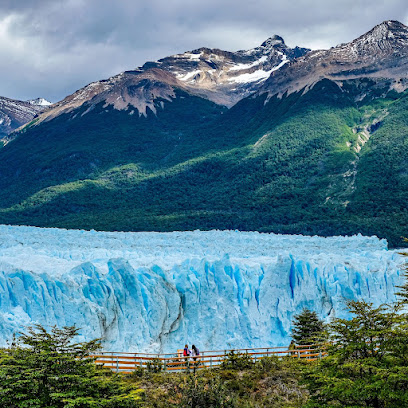
Solo Patagonia
Discover the breathtaking landscapes of Patagonia with Solo Patagonia, your trusted tour agency for unforgettable boat adventures in El Calafate.

Visit El Calafate
Experience the breathtaking beauty of El Calafate, the gateway to Patagonia's stunning glaciers and outdoor adventures.

Balcones de El Calafate
Explore Patagonia's breathtaking landscapes and adventures with Balcones de El Calafate, your trusted travel agency in El Calafate, Argentina.

Cañadon Del Arroyo Calafate
Explore the stunning landscapes and rich biodiversity of Cañadon Del Arroyo Calafate, a must-visit natural park in the heart of Patagonia.

Plazoleta Héroes de Malvinas
Discover the tranquil beauty and rich history of Plazoleta Héroes de Malvinas, a serene park in El Calafate, Patagonia's stunning natural landscape.

Unmissable attractions to see
Glaciarium Patagonian Ice Museum
Explore the breathtaking beauty of glaciers and the science behind them at Glaciarium, the Patagonian Ice Museum in El Calafate.

Reserva Laguna Nimez
Experience the tranquility of Reserva Laguna Nimez, a stunning nature preserve in El Calafate, home to diverse wildlife and breathtaking landscapes.
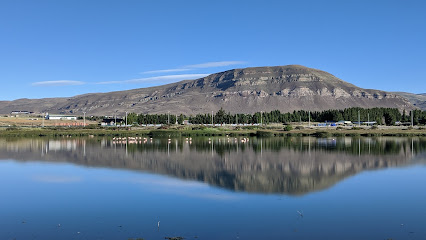
Parque Nacional Los Glaciares
Discover the breathtaking landscapes of Parque Nacional Los Glaciares, a UNESCO World Heritage site known for its stunning glaciers and diverse wildlife.

Yeti Ice Bar
Experience the unique Yeti Ice Bar in El Calafate, featuring ice-themed decor, innovative cocktails, and a vibrant atmosphere for an unforgettable night.

Patagonia Extrema
Explore the breathtaking beauty of Patagonia Extrema in El Calafate, where majestic glaciers and stunning nature await every traveler.

Punta Walichu - Reserva Natural y Arqueológica
Explore the stunning landscapes and rich cultural heritage of Punta Walichu, an archaeological gem near El Calafate, Santa Cruz, Argentina.

Plaza de Los Pioneros
Explore the tranquil Plaza de Los Pioneros in El Calafate, a perfect blend of natural beauty and cultural history amidst stunning mountain views.

Cartel de El Calafate
Explore the breathtaking beauty and cultural richness of Cartel de El Calafate, a must-visit tourist attraction in the heart of Patagonia.

Plaza de Los Pioneros
Discover the serene beauty and cultural richness of Plaza de Los Pioneros, a scenic park in El Calafate, Patagonia, perfect for relaxation and exploration.

Estancia 25 de Mayo
Discover the serene beauty and rich culture of Estancia 25 de Mayo in El Calafate, Argentina's stunning nature preserve.

Cave Restaurant Nativo
Experience the enchanting Cave Restaurant Nativo in Patagonia, where unique cave dining meets the flavors of local Argentine cuisine in a stunning natural setting.

Argentine Toy Museum
Discover the enchanting world of toys at the Argentine Toy Museum in El Calafate, showcasing a diverse collection that spans cultures and generations.

Manuel Belgrano Park
Experience the serene beauty of nature at Manuel Belgrano Park in El Calafate, a perfect spot for relaxation, picnics, and scenic views.

Southern Spirit Lake Argentino
Experience the breathtaking beauty of Patagonia with unforgettable tours at Southern Spirit Lake Argentino, where nature and adventure await.

Cañadon Del Arroyo Calafate
Discover the breathtaking landscapes and diverse wildlife of Cañadon Del Arroyo Calafate, a natural park in El Calafate, Argentina, perfect for outdoor enthusiasts.
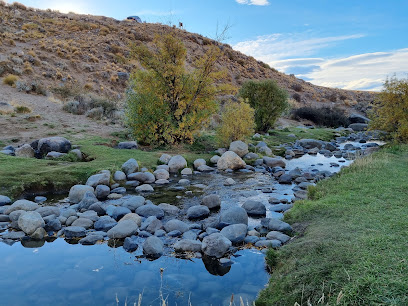
Essential places to dine
Isabel Cocina al Disco
Experience authentic Argentine cuisine at Isabel Cocina al Disco in El Calafate, where traditional cooking meets warm hospitality.

La Lechuza Pizza y Pastas
Experience the best pizza and pasta in El Calafate at La Lechuza Pizza y Pastas - where flavors meet tradition.

La Zorra Taproom
Experience the best of craft beer at La Zorra Taproom in El Calafate – where local brews meet Patagonian charm.
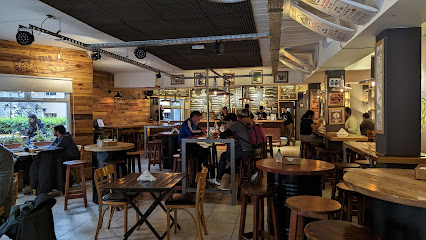
La Tablita
Experience the authentic taste of Argentina at La Tablita in El Calafate – where mutton barbecue meets fine dining.

Casimiro Biguá
Experience authentic Patagonian cuisine at Casimiro Biguá, famous for its exquisite mutton barbecue and breathtaking views in El Calafate.

Pietro's Cafe
Discover Pietro's Cafe in El Calafate - where exquisite Argentine flavors meet a cozy ambiance for an unforgettable dining experience.

Traditional WANACO Bar
Discover the essence of Argentine cuisine at Traditional WANACO Bar in El Calafate, where mouthwatering grilled dishes meet warm hospitality.

Parrilla Don Pichon
Discover authentic Argentine cuisine at Parrilla Don Pichon in El Calafate—where succulent grilled meats meet vibrant local flavors.

Mako Premium Bar
Experience vibrant Argentinian cuisine at Mako Premium Bar in El Calafate - where great food meets an inviting atmosphere.

Mi Viejo
Experience authentic Argentine flavors at Mi Viejo in El Calafate – where every meal is a celebration of quality grilling and tradition.

La Toldería
Discover La Toldería in El Calafate: A vibrant bar and gastropub serving delicious local cuisine amidst Patagonia's stunning landscapes.

Restaurante La Cocina
Discover authentic Argentine cuisine at Restaurante La Cocina in El Calafate - a culinary haven blending local flavors with stunning Patagonian views.

LA LECHUZITA
Experience authentic Argentine cuisine at La Lechuzita in El Calafate – where local flavors meet warm hospitality.

Viva la Pepa
Experience the best crêpes in El Calafate at Viva la Pepa - where every bite tells a story of flavor!

La Zaina Cocina Patagónica
Experience authentic Argentinian cuisine at La Zaina Cocina Patagónica in El Calafate - where traditional flavors meet warm hospitality.

Markets, malls and hidden boutiques
Arte Indio
Discover the essence of Patagonia at Arte Indio, your go-to souvenir store in El Calafate, offering authentic local crafts and unique keepsakes.
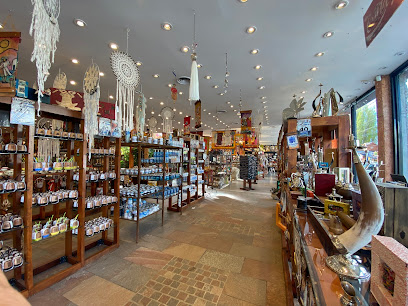
La Aldea de Los Gnomos
Discover the whimsical charm of La Aldea de Los Gnomos in El Calafate, where shopping meets local culture and family fun.
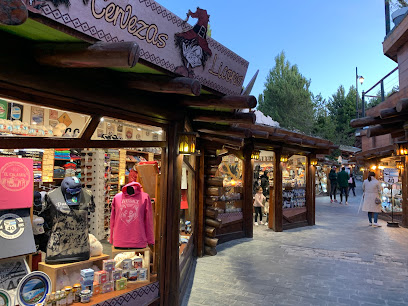
Vellon Negro
Explore Vellon Negro in El Calafate for unique, handcrafted clothing that captures the essence of local fashion and culture.

Finisterre Calafate
Explore unique fashion at Finisterre Calafate, a premier clothing store in El Calafate, where style meets the essence of Patagonia.

Tan Bonitas
Discover trendy women's fashion at Tan Bonitas in El Calafate, where local culture meets stylish design amidst breathtaking Patagonia.

Paseo Shopping
Explore Paseo Shopping in El Calafate: a premier destination for unique local crafts, international brands, delightful dining, and vibrant entertainment.

Huemul • Artesanías Regionales
Explore Huemul Artesanías Regionales for handcrafted treasures that embody the spirit and artistry of Patagonia.

Las Huellas
Explore the essence of Patagonia at Las Huellas, where local crafts and authentic Argentine gifts await in charming El Calafate.

Planet Patagonia
Discover the quirky treasures of Planet Patagonia, a novelty store in El Calafate offering unique souvenirs and local crafts that capture the spirit of Patagonia.

Outfields la Rural
Discover unique fashion at Outfields la Rural in El Calafate, blending local culture with contemporary style for every traveler.

Open Patagonia
Discover the essence of Patagonia at Open Patagonia, where local artistry meets unique souvenirs in a charming El Calafate gift shop.

Paseo de Los Pájaros
Explore Paseo de Los Pájaros in El Calafate, a shopping paradise blending local culture with modern retail experiences.

Los Duendes del Bosque
Explore Patagonia's vibrant fashion at Los Duendes del Bosque, where local artisans showcase unique clothing inspired by nature.

Mountain Store
Discover quality outdoor gear and unique souvenirs at Mountain Store in El Calafate, your essential stop for Patagonia adventures.

Carrousel
Shop stylish clothing and unique finds at Carrousel in El Calafate, the perfect stop for fashion-forward travelers.

Essential bars & hidden hideouts
Isabel Cocina al Disco
Experience the essence of Patagonian cuisine at Isabel Cocina al Disco, where traditional cooking meets local flavors in a cozy setting.

La Zorra Taproom
La Zorra Taproom in El Calafate: A cozy brewpub offering local craft beers and delicious food in the heart of Patagonia.

Traditional WANACO Bar
Savor the authentic taste of Argentine grill at Traditional WANACO Bar in El Calafate, where delicious food meets vibrant culture.
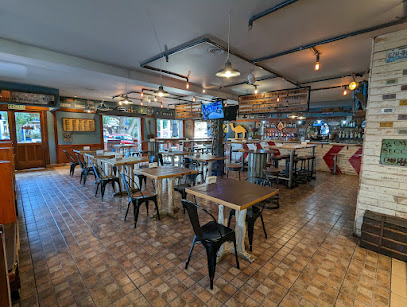
Mako Premium Bar
Discover Mako Premium Bar in El Calafate – a lively spot for Argentinian cuisine, fast food delights, and refreshing drinks in a vibrant atmosphere.

Yeti Ice Bar
Discover the frosty delights of Yeti Ice Bar in El Calafate, where cocktails meet ice sculptures for a unique nightlife experience.

La Toldería
Experience the vibrant flavors of Argentina at La Toldería, a premier gastropub in El Calafate, where culinary tradition meets modern flair.

Bar Borges & Alvarez
Savor the flavors of Patagonia at Bar Borges & Alvarez, where delicious grilled dishes meet a vibrant atmosphere in El Calafate.

La Chacrita de Nimez
Experience authentic Argentinian cuisine at La Chacrita de Nimez, a delightful restaurant with stunning views in El Calafate.

La Oveja Negra
Discover the lively ambiance of La Oveja Negra, a must-visit bar in El Calafate offering local drinks and unforgettable experiences.
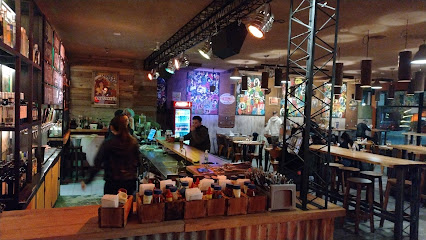
Mako Fuegos y Vinos
Experience the best of Argentine cuisine and fine wines at Mako Fuegos y Vinos in El Calafate, where every meal is a celebration of flavor and culture.

Elba'r
Experience the best of El Calafate at Elba'r, where artisanal espresso meets delightful gluten-free pastries in a cozy atmosphere.

la trinchera wine and beer
Discover La Trinchera in El Calafate, where local craft beers and exquisite wines meet a cozy atmosphere for an unforgettable evening.

Nina Grill & Beer
Experience the vibrant flavors and unique ambiance of Nina Grill & Beer in El Calafate – a must-visit restaurant for every traveler.

Gypsy Restobar
Discover the vibrant flavors of Argentina at Gypsy Restobar, a top gastropub in El Calafate offering a unique dining experience.

The Wine Shop
Experience the finest wines in El Calafate at The Wine Shop, where local flavors and international selections meet in a charming setting.

Local Phrases
-
- HelloHola
[oh-la] - GoodbyeChau
[chow] - YesSí
[see] - NoNo
[no] - Please/You're welcomePor favor/De nada
[por fah-vor/deh nah-dah] - Thank youGracias
[grah-see-ahs] - Excuse me/SorryPerdón
[pair-dohn] - How are you?¿Cómo estás?
[koh-moh ehs-tahs] - Fine. And you?Bien. ¿Y tú?
[bee-ehn. ee too] - Do you speak English?¿Hablas inglés?
[ah-blahs een-glehs] - I don't understandNo entiendo
[noh ehn-tee-ehn-doh]
- HelloHola
-
- I'd like to see the menu, pleaseMe gustaría ver el menú, por favor
[meh goos-tah-ree-ah vehr ehl meh-noo, poor fah-vor] - I don't eat meatNo como carne
[no koh-moh kahr-neh] - Cheers!¡Salud!
[sah-lood] - I would like to pay, pleaseQuisiera pagar, por favor
[kee-see-eh-rah pah-gahr, poor fah-vor]
- I'd like to see the menu, pleaseMe gustaría ver el menú, por favor
-
- Help!¡Ayuda!
[ah-yoo-dah] - Go away!¡Vete!
[veh-teh] - Call the Police!¡Llama a la policía!
[yah-mah ah lah poh-lee-see-ah] - Call a doctor!¡Llama a un médico!
[yah-mah ah oon meh-dee-koh] - I'm lostEstoy perdido
[ehs-toy pair-dee-doh] - I'm illEstoy enfermo
[ehs-toy ehn-fehr-moh]
- Help!¡Ayuda!
-
- I'd like to buy...Me gustaría comprar...
[meh goos-tah-ree-ah kohm-prahr...] - I'm just lookingSólo estoy mirando
[soh-loh ehs-toy mee-rahn-doh] - How much is it?¿Cuánto cuesta?
[kwan-toh kwehs-tah] - That's too expensiveEso es muy caro
[eh-soh ehs moo-ee kah-roh] - Can you lower the price?¿Puedes bajar el precio?
[pweh-dehs bah-har ehl pree-see-oh]
- I'd like to buy...Me gustaría comprar...
-
- What time is it?¿Qué hora es?
[keh oh-rah ehs] - It's one o'clockEs la una
[ehs lah oo-nah] - Half past (10)Son las diez y media
[sohn lahs dyehs ee meh-dee-ah] - MorningMañana
[mah-nyah-nah] - AfternoonTarde
[tahr-deh] - EveningNoche
[noh-cheh] - YesterdayAyer
[ah-yehr] - TodayHoy
[oy] - TomorrowMañana
[mah-nyah-nah] - 1Uno
[oo-noh] - 2Dos
[dohs] - 3Tres
[trehs] - 4Cuatro
[kwah-troh] - 5Cinco
[seen-koh] - 6Seis
[says] - 7Siete
[syeh-teh] - 8Ocho
[oh-cho] - 9Nueve
[nweh-veh] - 10Diez
[dyehs]
- What time is it?¿Qué hora es?
-
- Where's a/the...?¿Dónde está...?
[dohn-deh ehs-tah] - What's the address?¿Cuál es la dirección?
[kwal ehs lah dee-rehk-syohn] - Can you show me (on the map)?¿Puedes mostrarme (en el mapa)?
[pweh-dehs mohs-trar-meh (ehn ehl mah-pah)] - When's the next (bus)?¿Cuándo es el próximo (colectivo)?
[kwan-doh ehs ehl proh-ksee-moh (koh-lehk-tee-voh)] - A ticket (to ....)Un boleto (a ...)
[oon boh-leh-toh (ah ...)]
- Where's a/the...?¿Dónde está...?
History of El Calafate
-
El Calafate, located in the southern region of Patagonia, Argentina, traces its origins back to the early 20th century. The town was named after the calafate bush, a native plant whose berries were used by the indigenous Tehuelche people. European settlers arrived in the early 1900s, attracted by the opportunities for sheep farming in the expansive Patagonian plains.
-
The official establishment of El Calafate as a town occurred in 1927. Initially, it served as a remote outpost providing supplies and services to the sparse population of the region. Its strategic location on the shores of Lago Argentino made it an ideal spot for a settlement, acting as a gateway to the vast wilderness of Patagonia.
-
The discovery of the Perito Moreno Glacier in the early 20th century marked a turning point for El Calafate. The glacier, one of the few in the world that is still advancing, became a significant attraction. In the 1970s, the Argentine government recognized the potential of the region for tourism and established Los Glaciares National Park to protect the natural wonders, including the Perito Moreno Glacier, Fitz Roy Mountain, and numerous other glaciers and peaks.
-
During the late 20th century, substantial investment was made to develop El Calafate’s infrastructure to accommodate the growing number of tourists. The opening of El Calafate International Airport in 2000 was a pivotal moment, significantly improving accessibility. Hotels, restaurants, and other tourism-related businesses flourished, transforming the once-sleepy town into a bustling tourist hub.
-
El Calafate is not just a gateway to natural beauty but also a repository of cultural heritage. The El Calafate Regional Museum, known as the Centro de Interpretación Histórica, offers insights into the region’s indigenous history, European colonization, and the development of the Patagonian frontier. The Tehuelche people’s legacy and the influence of early settlers are evident in the town’s cultural fabric.
-
Today, El Calafate is a vibrant town that seamlessly blends its historical roots with modern amenities. It serves as the principal base for exploring Los Glaciares National Park and other natural attractions in Patagonia. Festivals, cultural events, and local crafts reflect the town’s rich heritage and its ongoing relationship with the stunning Patagonian landscape.
El Calafate Essentials
-
El Calafate is located in the Santa Cruz Province of Argentina. The nearest airport is Comandante Armando Tola International Airport (FTE), which is about 23 kilometers from the town center. There are direct flights from Buenos Aires, Ushuaia, and other major cities in Argentina. From the airport, you can take a taxi, shuttle bus, or rent a car to reach the town.
-
El Calafate is a small town and most attractions are within walking distance. Taxis are readily available for longer trips or if you prefer not to walk. There are also local buses that can take you to nearby attractions, such as the Perito Moreno Glacier. Car rentals are available and can be a convenient option for exploring the surrounding areas at your own pace.
-
The official currency in Argentina is the Argentine Peso (ARS). Credit cards are widely accepted in hotels, restaurants, and shops in El Calafate. However, it is advisable to carry some cash, especially for smaller establishments and markets. ATMs are available in the town center, but it's wise to withdraw sufficient cash in Buenos Aires or another major city before arrival.
-
El Calafate is generally a safe destination for tourists. However, it is always best to take standard precautions. Avoid walking alone at night in unfamiliar areas and keep an eye on your belongings in crowded places. There are no specific high-crime areas targeting tourists, but staying vigilant and aware of your surroundings is always recommended.
-
In case of emergency, dial 101 for police, 100 for fire, and 107 for medical emergencies. The local hospital and medical facilities are available in El Calafate. It is recommended to have travel insurance that covers medical emergencies. For minor health issues, there are pharmacies in the town where you can purchase over-the-counter medications.
-
Fashion: Do dress in layers as the weather can be unpredictable. Avoid wearing overly casual or revealing clothing in more formal settings. Religion: Do respect local customs and traditions. While El Calafate is not particularly religious, it's always good to be respectful at any religious sites. Public Transport: Do be respectful and give up your seat to elderly passengers. Don't eat or drink on public transport. Greetings: Do greet people with a handshake and a smile. Eating & Drinking: Do try local delicacies such as Patagonian lamb and trout. Don't refuse hospitality, as it is considered impolite.
-
To experience El Calafate like a local, visit the local markets where you can buy fresh produce and traditional Argentine goods. Engage with locals, as they are often friendly and willing to share stories about the town's history and culture. Don't miss visiting the Glaciarium, a museum dedicated to glaciers, and take a boat tour to see the Perito Moreno Glacier up close. For a unique experience, try some locally made Calafate berry liqueur.
Trending Landmark in El Calafate
-
PatagoniaChic - Excursiones en El Calafate
-
Glaciarium Patagonian Ice Museum
-
Reserva Laguna Nimez
-
Los Glaciares, Intendencia National Park
-
Punta Walichu - Reserva Natural y Arqueológica
-
Centro de Interpretación Histórica Calafate
-
Cartel de El Calafate
-
Calafate Parque Hotel
-
Estancia 25 de Mayo
-
Calafate Tours
-
Solo Patagonia
-
Visit El Calafate
-
Balcones de El Calafate
-
Cañadon Del Arroyo Calafate
-
Plazoleta Héroes de Malvinas
Nearby Cities to El Calafate
-
Things To Do in Puerto Natales
-
Things To Do in Punta Arenas
-
Things To Do in Ushuaia
-
Things To Do in Puerto Varas
-
Things To Do in Bariloche
-
Things To Do in San Carlos de Bariloche
-
Things To Do in Osorno
-
Things To Do in Valdivia
-
Things To Do in Pucon
-
Things To Do in Temuco
-
Things To Do in Concepción
-
Things To Do in Curicó
-
Things To Do in San Rafael
-
Things To Do in Mar del Plata
-
Things To Do in Rancagua












